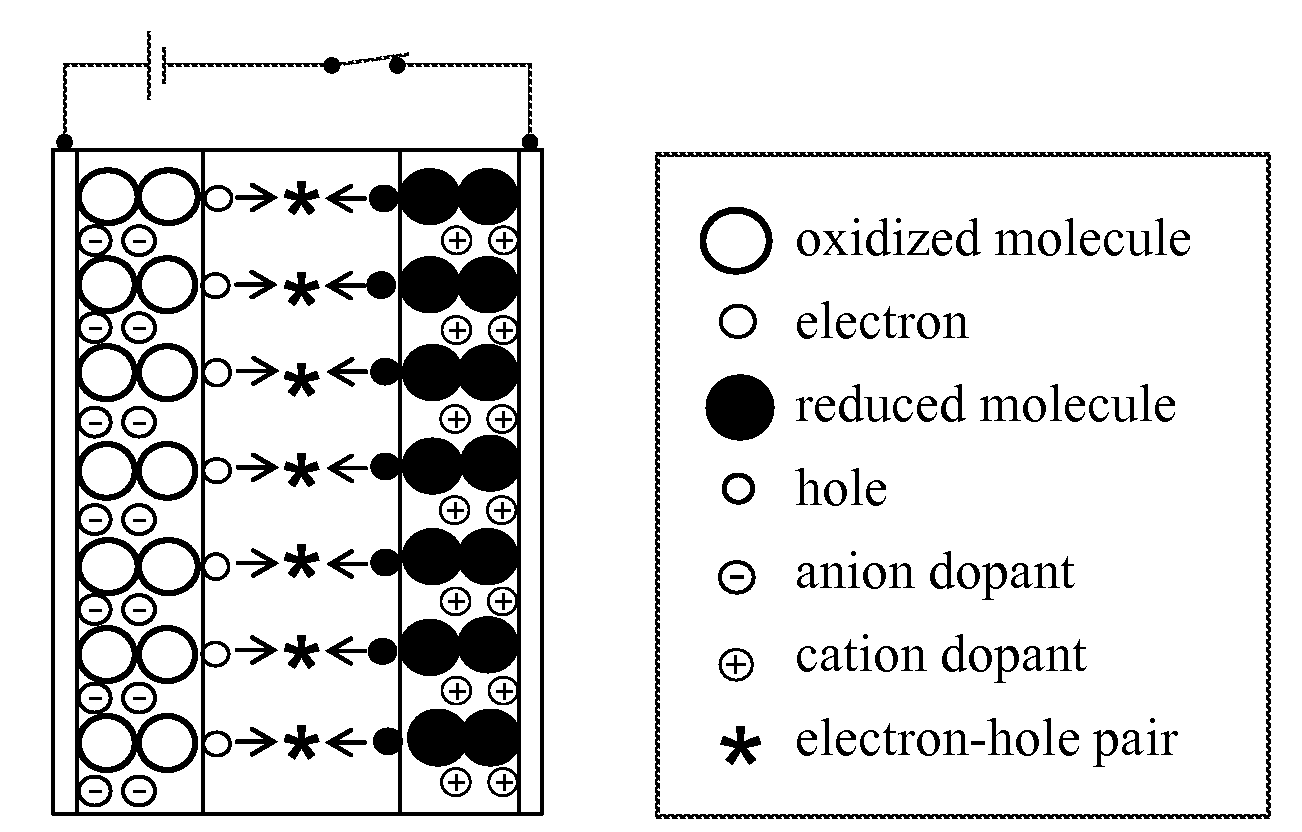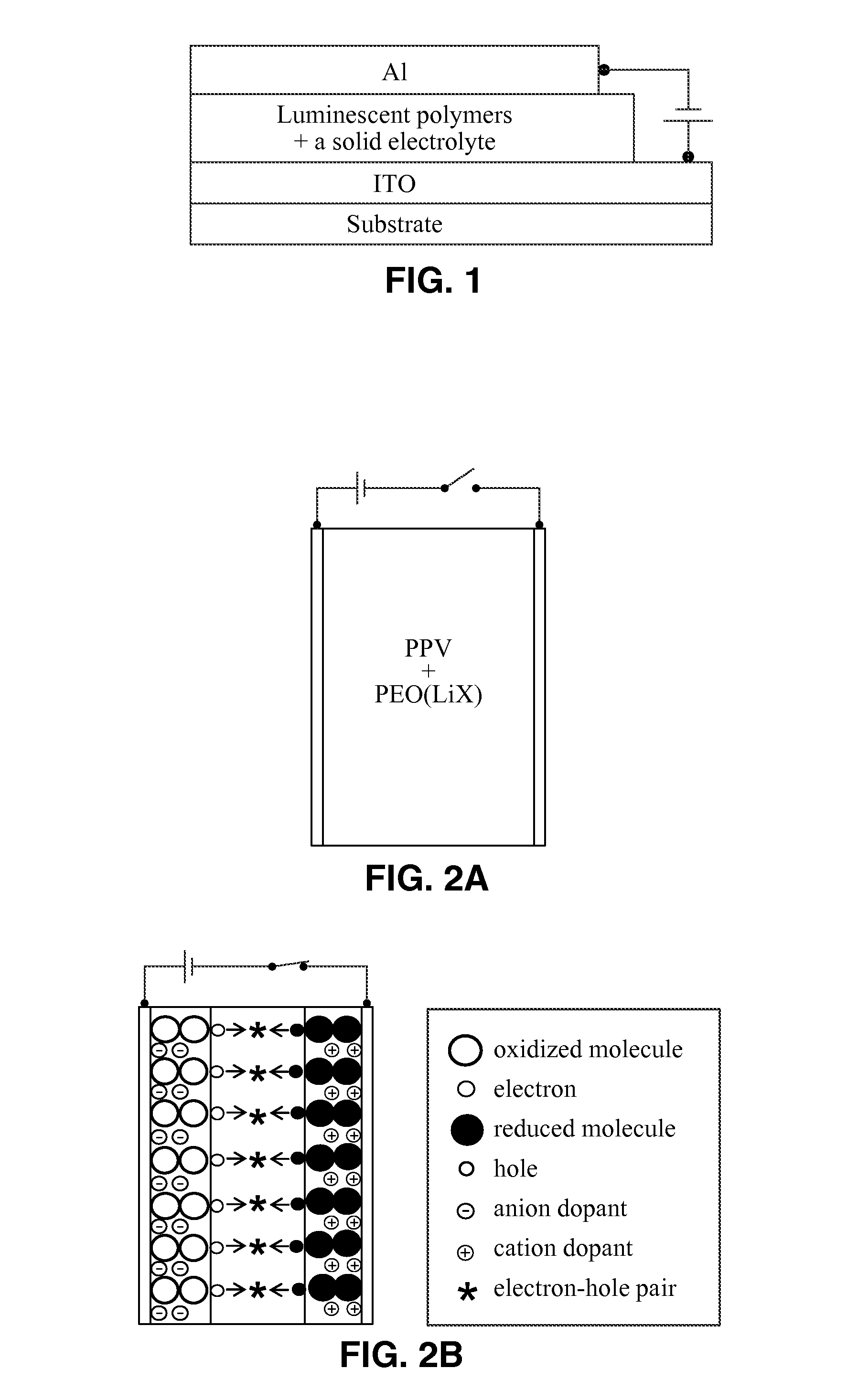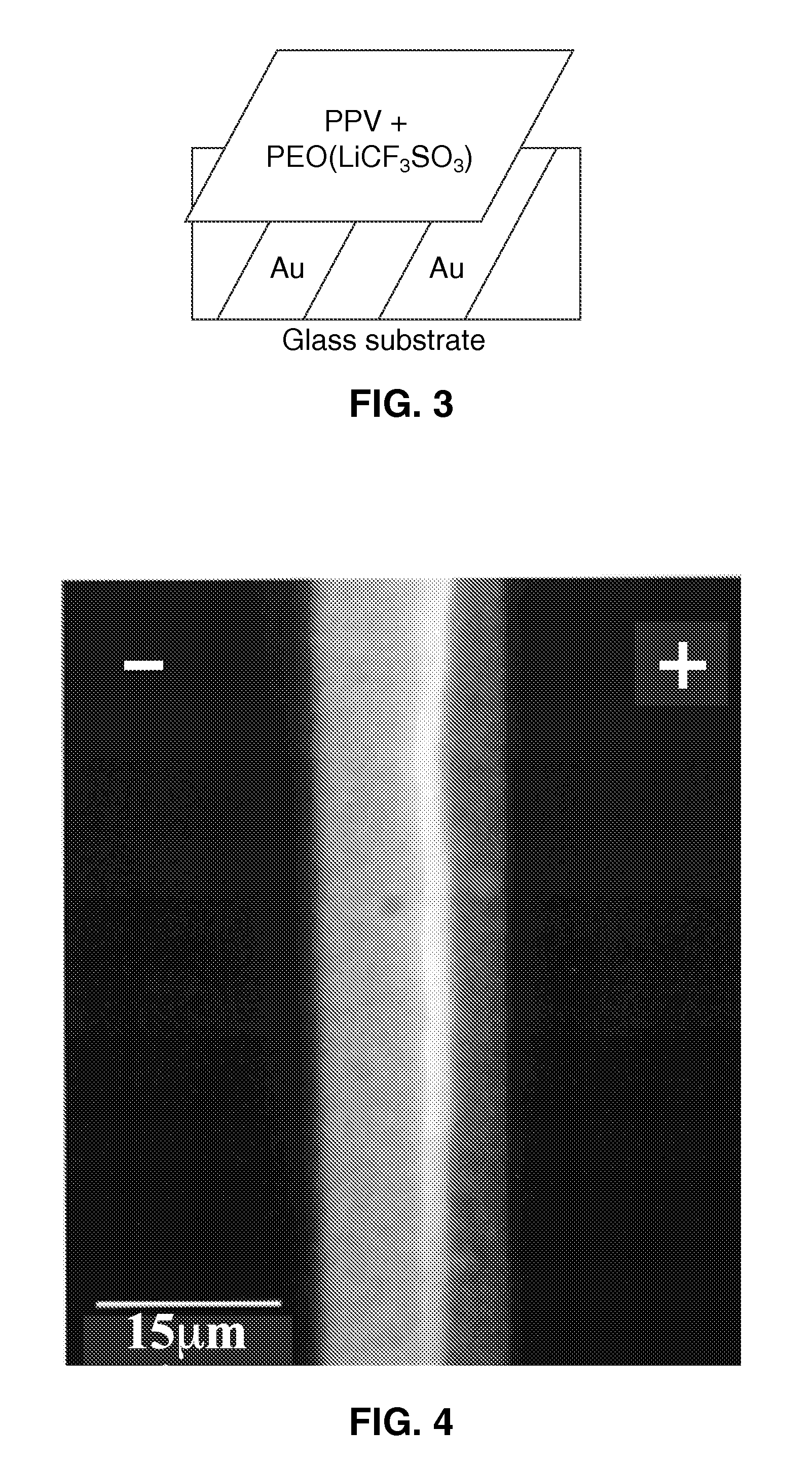Materials for the formation of polymer junction diodes
a junction diode and polymer technology, applied in the direction of oxide conductors, conductors, non-metal conductors, etc., can solve the problems of inability to control the in-situ doping of conjugated polymer thin films, unstable n-type doped conjugated polymers, and insoluble polymers, etc., to achieve high current rectification ratio, low operating voltage, and high quantum efficiency
- Summary
- Abstract
- Description
- Claims
- Application Information
AI Technical Summary
Benefits of technology
Problems solved by technology
Method used
Image
Examples
Embodiment Construction
[0036]Referring more specifically to the drawings, for illustrative purposes the present invention is generally embodied in FIG. 1 through FIG. 6. It will be appreciated that the invention may vary as to configuration and as to details of the parts, and that the method may vary as to the specific steps and sequence, without departing from the basic concepts as disclosed herein.
[0037]The present invention involves solid electrolytes that are polymerizable and compatible with appropriate conjugated polymers, conjugated polymers that are stable at both the p- and n-doped states, and processing of a static p-i-n junction in polymer thin films.
1. SYNTHESIS OF POLYMERIZABLE ELECTROLYTES
[0038]The LECs have been fabricated from dual-ion or single ion conductors. To form a stable p-i-n junction in the LECs, either the anions or the cations of the solid electrolyte need to be mobile yet they can be immobilized on demand. One example of such ionic species is the photochemically curable cation ...
PUM
| Property | Measurement | Unit |
|---|---|---|
| Flow rate | aaaaa | aaaaa |
| Photocurable | aaaaa | aaaaa |
| Electric charge | aaaaa | aaaaa |
Abstract
Description
Claims
Application Information
 Login to View More
Login to View More - R&D
- Intellectual Property
- Life Sciences
- Materials
- Tech Scout
- Unparalleled Data Quality
- Higher Quality Content
- 60% Fewer Hallucinations
Browse by: Latest US Patents, China's latest patents, Technical Efficacy Thesaurus, Application Domain, Technology Topic, Popular Technical Reports.
© 2025 PatSnap. All rights reserved.Legal|Privacy policy|Modern Slavery Act Transparency Statement|Sitemap|About US| Contact US: help@patsnap.com



